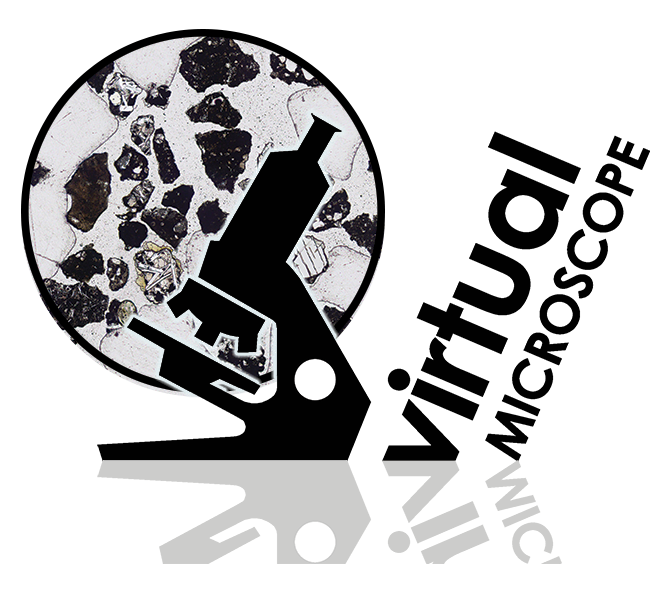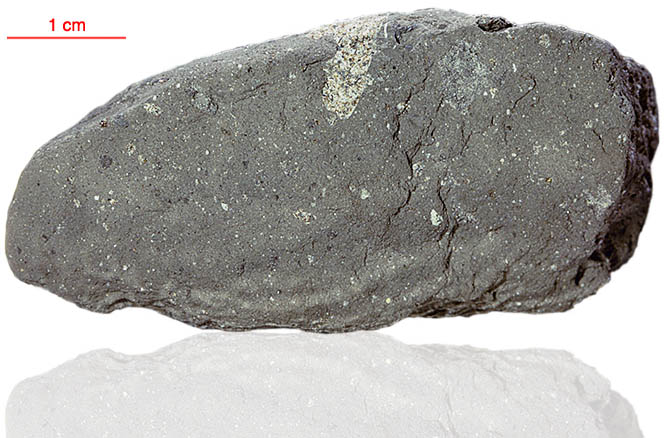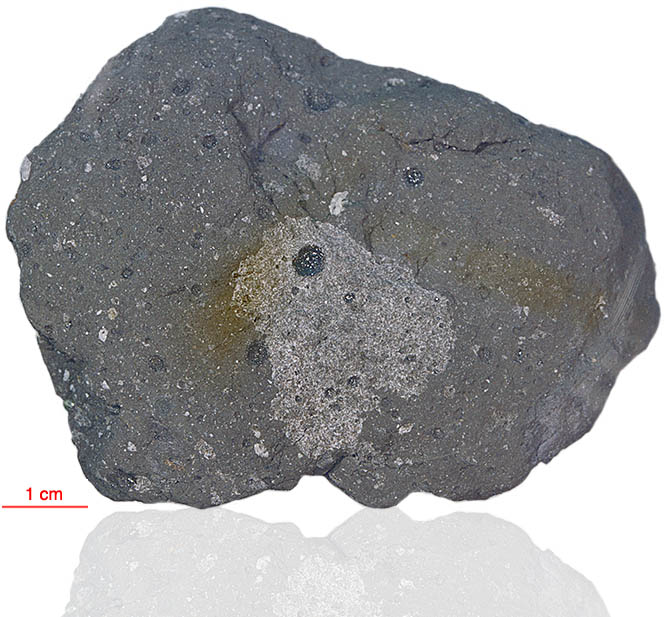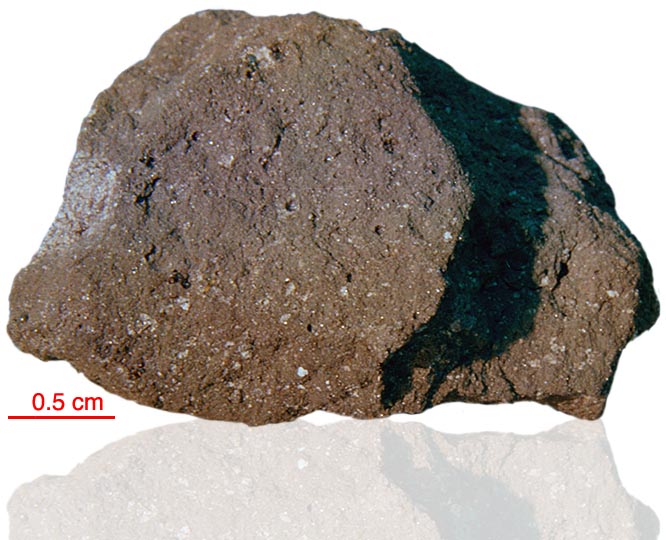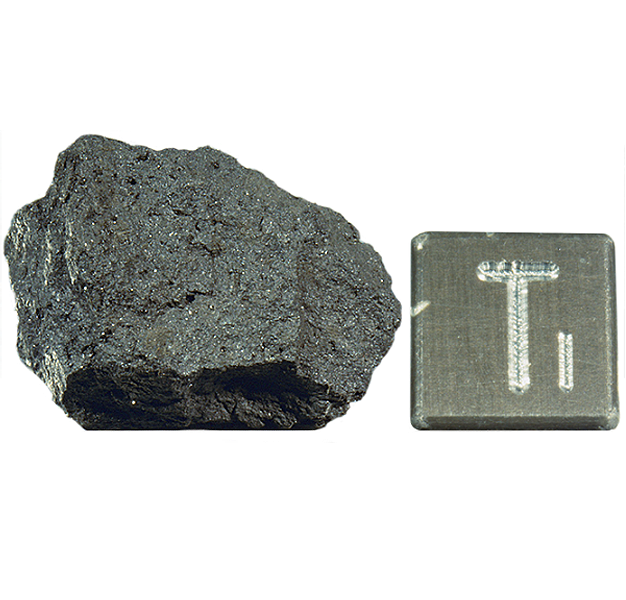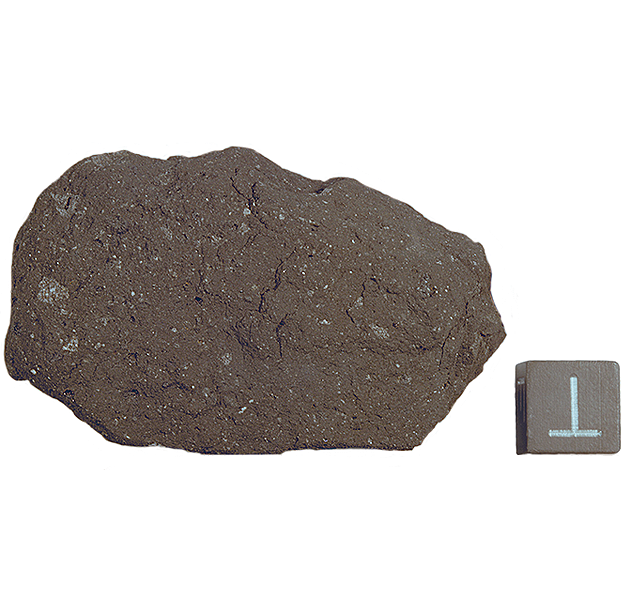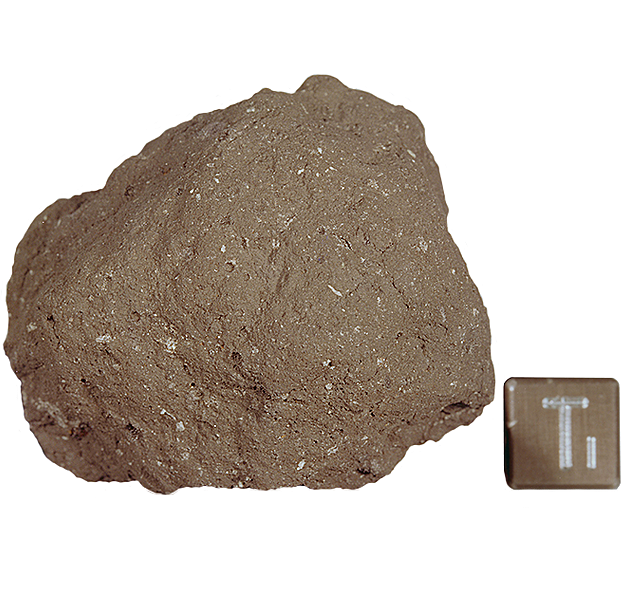
Fact sheet
Sample 10067 is typical of regolith (soil) breccias found at the Apollo 11 landing site. It contains basaltic rock fragments (lithic clasts), mineral clasts and coloured glass in a dark glassy matrix.
Particularly noticeable in thin section are the spherules and fragments of orange glass which are volcanic in origin, formed in fire fountains during eruption of the Lunar Mare basalts. In reflected light relatively quite large grains of troilite and metallic iron can also be seen.
Further details of this and other Apollo samples are here: http://curator.jsc.nasa.gov/lunar/
The Apollo 11 samples create an iconic collection since they were the first rocks collected by humankind that were returned to Earth from another solar system body. The Apollo 11 team collected and returned 22 kg of rock and soil samples.
Apollo 11 launched from Cape Kennedy on 16 July 1969. An estimated 530 million people watched Armstrong's televised image and heard his voice describe the event as he took "...one small step for a man, one giant leap for mankind" on 20 July 1969.

